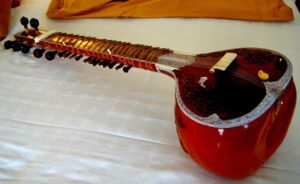Beginners Guide : Basic precautions as a Blacksmith

Just like other industries, certain safety rules should be regarded. Blacksmithing also has its safety rules. As a beginner, you should be familiar with basic safety measures. This knowledge will also help you learn your craft faster.
Adhere to the guidelines in this article and you will be safe from risky injuries that may affect your wellbeing and everyone around you. Remember that these rules apply to everyone who works with metals, beginners, and pros.
Common Forging Hazards
Before you dive deeper into forging, it’s good to be aware of the hazards involved. Many blacksmiths have suffered from them because they failed to use the basic safety guidelines of the industry.
Forging activities, like stamping, can present high risks when working on forged parts. Injuries can also occur while trimming the blaze or rough edges. More intensive forging can likewise discharge sections, tools, or scale which may lead to injury.
Other common risks blacksmiths should be aware of include burns and joint injuries. For burns, it varies. Burns may be serious while they can also be mild. Aside from skin burns, the hot sparkles that fly during pounding may harm the eyes.
Any blacksmith may encounter risks, therefore, it is important to be while working on metals. Following basic safety precautions will reduce all kinds of forging hazards.
Basic Safety Tips For Blacksmiths

Remember these simple safety rules while forging as a blacksmith.
- Grind with face shield
Whenever you are grinding or cutting, always use a face shield. Among the dangers, you can be exposed to while cutting or grinding are those metal sparkles that fly around. A face shield will prevent possible face injuries. This tool is not expensive, it is easily accessible, yet many blacksmiths don’t wear it often. Be careful!
It’s alarming how many blacksmiths neglect wearing face shields. This is a risky pit you must avoid as a beginner.
- Keep a first aid kit
This is a must. Always keep a first aid kit in your workshop.
No one can tell what may happen while working in the workshop. Most often, cuts and burns are common injuries in the blacksmithing industry. Having something to treat yourself during an emergency is very important. Make sure your first aid kit has different sizes of plasters, clean cloth, bandages, skin rash cream, expendable gloves, scissors, distilled water, safety pins, tweezers, and sticky tape.
- Safety glasses
According to a study, wearing safety glasses would have prevented over ninety percent of eye injuries that occur in the world of blacksmithing.
A pair of safety glasses is one of the most valuable safety measures to use as a blacksmith. Always wear them when you work on pounding or cutting. Don’t make the mistake, like most blacksmiths do, to neglect to wear your safety glasses. Always wear your safety glassing while forging.
- Gloves precautions
It’s not every time you need to wear gloves. You need to understand the appropriate timing. Only use gloves when necessary. It’s just like how other tools serve different purposes.
Conclusion
These are the basic safety precautions every blacksmith needs. As a beginner, you need to be aware of the common hazards in the blacksmith workshop. You will prevent most of these risks if you adhere to basic safety rules. Visit Cliquez ici for modern blacksmith tools.









